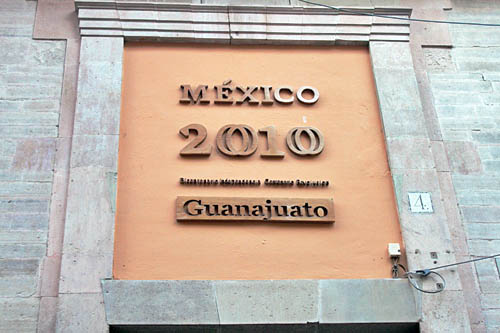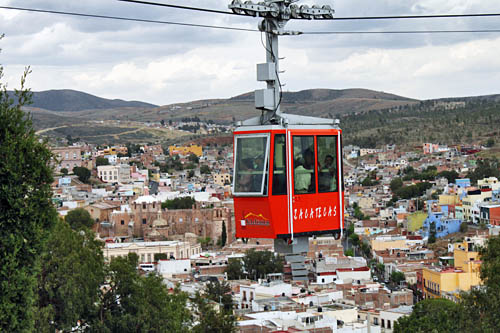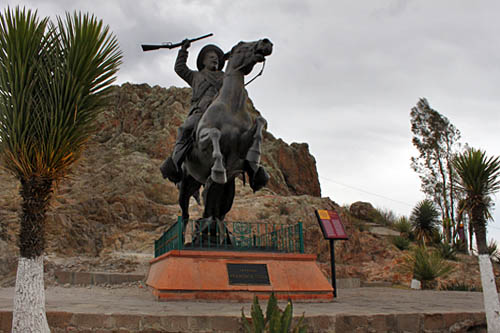I must confess my ignorance. I know virtually nothing of Mexican history. I know that the Mexican Revolution was in 1910, and that Pancho Villa was one of the major players in the revolution, but that’s about as far as my knowledge goes. So I was mystified by all the road signs that said “Ruta 2010 Bicentenario.” It made no sense to me. A bicentennial is 200 years, but the revolution occurred 100 years ago. I finally put the pieces together on the day I visited La Bufa, the monolithic rock bluff that towers over the city of Zacatecas.

From the center of downtown I headed past the museums of Zacatecas to the upper levels of the city, keeping an eye on the cable car crossing overhead. When the cable was directly above me, I discovered a stairway leading up El Grillo Hill and began to climb, stopping every so often to catch my breath and take photos as Zacatecas spread out at my feet. At the top I diverted a few hundred feet to the old El Eden mine, one of the richest silver mines in the world until it closed in 1960. Due to flooding in three of its seven levels, and a city that was creeping closer to the mine, blasting had become too dangerous. The mine opened again in 1975 as a tourist attraction, following extensive renovations that added paved floors, special lighting, and even an underground discotheque.


Following the mine tour I retraced my steps to the Teleferico (cable car) that would carry me across the valley to La Bufa. The small red coach, with a capacity of perhaps 12 passengers, allowed each of us to stand next to a window, providing panoramic vistas of the city as we crossed at an altitude of 279 feet.


At the top was a small chapel dedicated to Virgin Patrocinio,the patron saint of Zacatecas; a mausoleum that holds the remains of celebrated Zacatecanos; and monumental sculptures of the three most important personages during the revolution, Pancho Villa, Felipe Angeles, and Panfilo Natera. Almost lost among the larger attractions was tiny Museo de la Tomo de Zacatecas (Museum of the Taking of Zacatecas), and it was there I began my Mexican history lesson. With it’s rich silver ore, Zacatecas was a prime target during the revolution, with both federals and insurgents battling for the city. When Pancho Villa and his troops finally took Zacatecas, success of the revolution was virtually assured. The museum also provided the missing piece of my puzzle; while the revolution began in 1910, Mexico won its independence in 1810, thus 2010 is a double celebration for the country.
Can’t view the above slide show of the cable car and La Bufa in Zacatecas, Mexico? Click here.
Mexico went to great lengths to celebrate the double anniversary. More than 300 million pesos were allocated by the government to support Mexico 2010, which began on September 16, 2009, and culminated on Independence Day, September 16, 2010. Prior to the launch of festivities, ten new archeological sites were opened and 30 museums were remodeled across the country. Events commemorating Mexican Independence were held in six States and eight States produced events to commemorate the Revolution. Twenty-two separate routes, organized by military campaigns and marked by burgundy-colored “Ruta 2010” signs, ran through 11 states.

Am so glad you posted this! At the moment I am reading Barbara Kingsolver’s “La Lacuna”. Although it is a historical novel, set (up to the point I have read) in the 1930s, the central characters are Trotsky, Diego Rivera and Frida Kahlo, and there were references to “the revolution” which I didn’t understand…but now I do!! Thanks.
an underground disco sounds really fun! Thanks for sharing this history and culture.